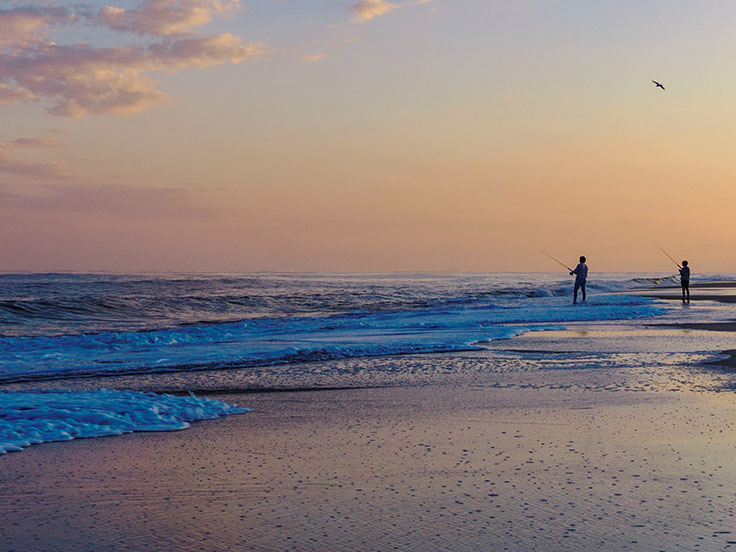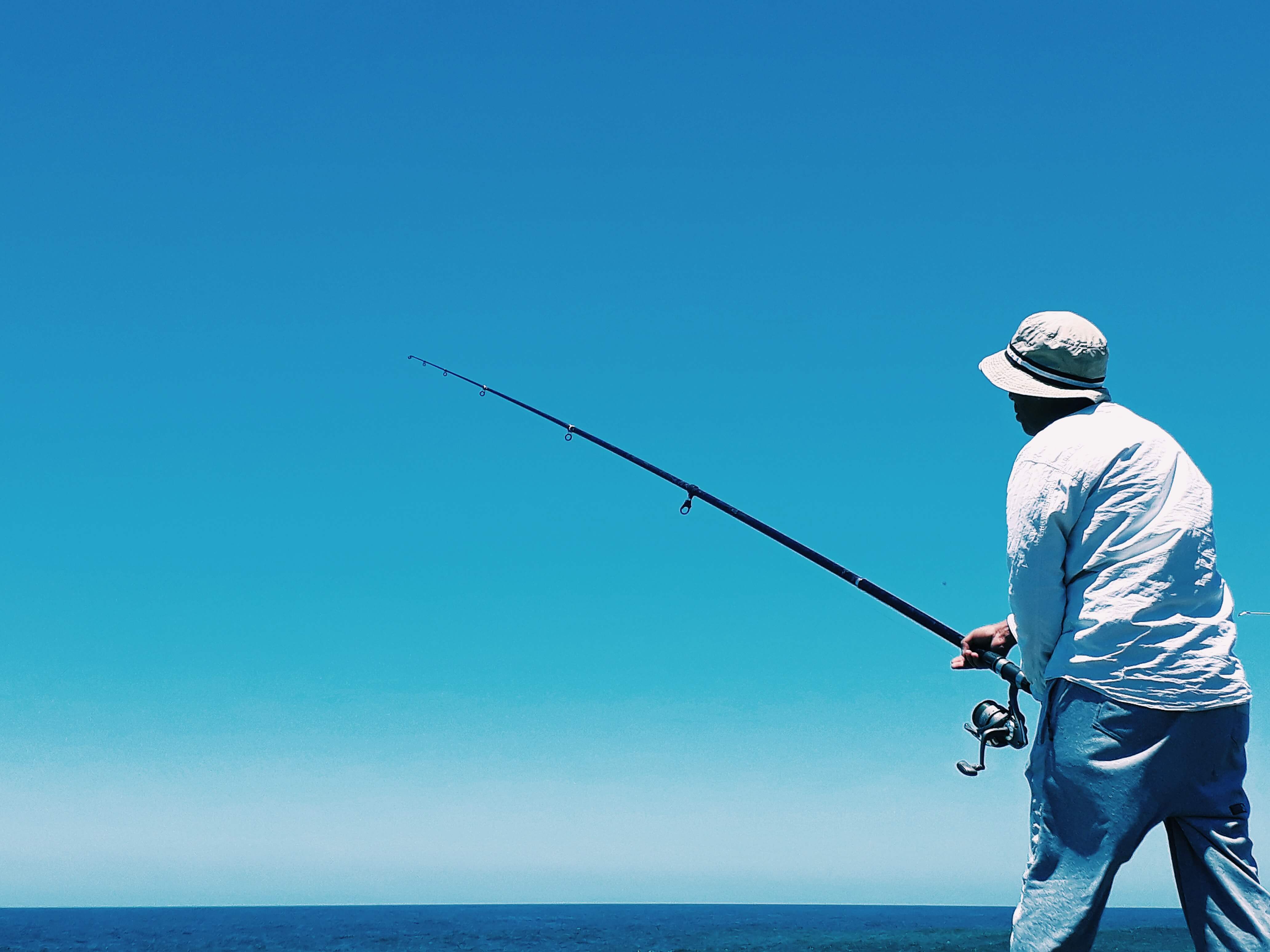
La surfcasting fishing is a technique which requires a special Specific equipment to hope to capture fish. Even if, in certain respects, the reel can be borrowed from carp fishing techniques, this will be the only element. The rest will have to withstand corrosion or to the requirements techniques of this practice.
We then opt for a package dedicated to surfcasting. The fishing rod, the reel and in particular the braid and the nylon. The main features of this equipment will be outlined in detail, including the notion of diameter and size.
The supports will also be essential for practice from the beach and so that you don't have to put your kit on the ground. Finally, you'll need luggage and accessories to meet the requirements of the technique and variations in conditions, of which there are many, particularly when we are looking for species such as bar or the sea bream.
The rod and reel combo

This is the key to being able to surfcasting in both leisure and competition. It will be made up of three elements reel, the rod and of course the line body.
Le reel will ideally have a large reel. This will enable him to quickly put the line outlet into action when casting. The aim is to easily achieve good distances, this is made much easier by the weight of the weight. According to the most famous manufacturers, you will opt for sizes of 5500 or 14000 at Shimano and 35 and 45 for a reel manufacturer like Daiwa.
Le brake will have to meet a good power of at least 10kg and always for the sake of casting, a slow rewind when retrieving will ensure that long distances are reached. The recovery will have to fluctuate between 80 and 100cm to allow you to easily remove the sinkers and bring them back without getting stuck every metre in the ground.
Level rod, two elements will have to be integrated into your choice. We'll be talking about length and power. The former will be between 3m90 and 6m for really special cases. To start with, you can choose a size of 4m20 or 4m50. Power levels will depend on the sectors in which you operate. But between 100 and 200 or 225g from power, you won't make any mistakes, and you'll be able to make widespread use of your assembly. Of course, rings and all colour decorative elements must be suitable for the sea.
The choice is between nylon and braid. If you're just starting out, we advise you to opt for nylon. Easier to set up, it won't cut you and will allow a few mistakes to slip through at the start. A reel of 300m in 30 to 40/100 should be just the thing for all your fishermen who are learning about technique.
Rod holders and holders

Here too, we have an essential element of the surfcasting fishing. With the exception of the dykes, where you will unfortunately sometimes be obliged to put down your car equipment the rest of the time, you'll be more comfortable and in better conditions to position your rod on a support.
The spade of surf is still the simplest and easiest to use. It will be available in several lengths and colour. Choose the longer models for softer substrates such as sand, and shorten the models if you find yourself in areas with pebbles or rocks.
This will allow you to position yourself in different places if you have several rods. This ensures that you can cover your target jobs with greater versatility and try out more things. On the other hand, it requires mobility and to remain available to monitor all canes effectively.
Le tripod is solution number 2. Heavier, it will require a little effort to get it up to the waterfront. The advantage is that it is more stable and allows you to group your canes in the same place. You'll even be able to rely on tethering systems to cope with the toughest conditions fishing conditions and tips on how to use them, depending on the brand weight, your hook or your assembly.
Small equipment and luggage
To set up your first fishing trips, you will need to obtain accessories essential in the first instance. There are not necessarily many of them, but they absolutely must be part of your outing. Here are the main ones:
- The seals. We advise you to always have a few leads and 2 or 3 different weights ready. They'll cover different fishing situations, such as bass, meagre, bream or even skate.
- The hooks. Depending on the bait you mount, you can opt for models of different shapes and sizes. Yuki, VMC or even Daiwa offers some very interesting selections.
- Le leader. Made from carbon fluroro or nylon, these reels allow you to cast discreet sections as close as possible to the fish. Depending on the species of fish you're after, you'll need to opt for different diameters
- The elements of connection. This is what will enable you to link all the parts together. You'll need to buy staples, swivels, pearls, sometimes floating ..
La luggage, this is the second part. It's also important to be able to tidy everything up properly and bring all this new equipment in easily equipment at waterfront. This ensures that you don't suffer too much on this journey, which can sometimes turn into a particularly long margin.
For the novice fishermen if you don't want to invest immediately, you can count on a rucksack you already have. One or two boxes, a bag for the bait and good organisation will enable you to find out.
If you're already a fan of the sport, our advice would be to buy a full backpack which can be found at Daiwa, , Sunset or Vercelli. You'll have a model that's comfortable to put on your shoulders, easier to wear and with thoughtful storage for the surfcasting fishing. Le rod sheath will also be able to be part of its new equipment.
We hope that these few tips will help you to reassure yourself about your choice. In any case, if you are unsure, we will be delighted to answer your questions by email or telephone.
You might also like to read :
